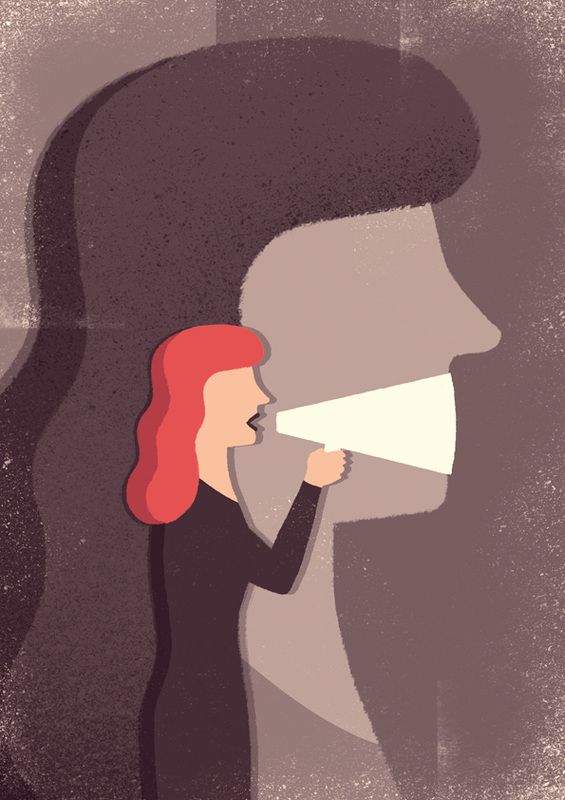What does your art mean? Why did you paint this? For how much do your artworks get sold? How much time did it take to make this painting? Why did it take you so long? Will you draw me? And other annoying questions that make an artist feel absolutely uncomfortable; and lead us to question the artist’s freedom of creation.
Although I have been painting for years, I still feel like screaming in the face of anyone asking me these questions as an artist. And my biggest pet peeve? How is your art helping the world? Which problem is it solving?
How many problems are solved through art?
0 problems! I know everyone is telling you that art serves to educate the masses, raise awareness, suggest solutions, and so on. All of these are true and are a byproduct of any communication tool that allows human interaction. It’s a way for ideas to travel around and for influence to take place.
But, art is not created to solve problems. That in fact, is what design is for.
Art is an aesthetic and emotional experience for both artists and viewers. I have never visited a museum, stared at a painting, and thought to myself: “I need to know what problem this artwork solved in 1845”. It sounds ridiculous to judge a piece of art based on its utility.
The art motifs on mosques, churches, book covers, murals, and other artistic elements never existed because they served a purpose. They existed for their aesthetic value. For us to experience different feelings. Because as humans, we appreciate beautiful things. We need enough visual nutrition to keep going, creating, and innovating.
The last time I checked, nature looked beautiful (people, animals, landscapes, sunsets, etc.). And nobody wondered what problem a beautiful sunset solved.
An artist is free to create whatever they want to create
You may think that your idea is brilliant and would be helpful to an artist. But, unless you’re asked to give suggestions and opinions; Kindly, keep them to yourself.
It is very easy to criticize the work of an artist. Even easier to think that you are a bright thinker who wasn’t blessed with the means to translate your thoughts into a physical piece of art which eventually gives you the right to tell another artist what they should be painting and how your ideas will surely be a hit.
Instead of talking about it, master the courage to start a painting yourself. Fail, fail again, and fail more times. It is the only way to know if your ideas are brilliant enough to make a successful art career or if you are being delusional.
The Artist’s Freedom of creation crisis: The social take
For years, we have been talking about the artist’s freedom of creation. And I don’t even mean pieces of art that could be offensive to some religions, politics, or even human rights. Way tighter, in our homes, classrooms, and online.
Growing up in a household with family members that have strong opinions about many topics, I was often cautious with the art I create. I would better avoid painting anything that includes taboo subjects. I could paint freely, but that freedom still had limits.
As an artist, I believe in the necessity of experimentation. Certain themes, however, no matter how free you think you are, will be censored at least once in your career. If I was to exhibit an artwork in my city, it would need to contain no nudity, no religious connotations, no sexual or political references, and so on. This by nature, has taught me to practice self-censorship and avoid experimenting with topics such as mythology although, for the longest time, it was something I was obsessed with.
The Artist’s Freedom of Creation Crisis: The Economic Take
Artists often face financial challenges that can limit their creative freedom. The need to make a living, either through a job or from their art can lead to compromises or pressures to conform to market demands. Thus, creating the art people want to buy instead of creating the art we love and connect with. Economic factors can also influence the availability of resources and support systems for artists, impacting their ability to explore unconventional or risky artistic endeavors.
And if you want to still pick risky endeavors and starve, your entourage will make sure to stop you from doing so. Because everyone knows what’s best for you except for yourself :3
The Artist’s Freedom of Creation Crisis: Social media
I know what you’re thinking! With social media, as artists, we are faced with a heightened risk of public backlash for our work.
And controversial or provocative art can quickly spark outrage, which may result in censorship, boycotts, or even threats to our safety. This atmosphere of heightened scrutiny is definitely discouraging artists from pursuing the challenging and unconventional artistic expressions they deeply want to follow and experiment with.
Conclusion
As an artist, I am all for respecting the boundaries of ethics, cultural norms, and societal sensitivities. However, as an individual, a parent, a partner, a sibling, and a friend, do not add any further pressure to the artists in your life. Let them create whatever their heart desires and especially, keep your dumb questions to yourself. As for artists, enjoy creating <3



